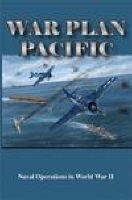War Plan Pacific – PC Game Review
 War Plan Pacific.
War Plan Pacific.
Designer: John Hawkins. Developer: KE Studios. Publisher: Shrapnel Games. $39.95 (physical).
Passed Inspection: Great concepts, simple mechanics, superior play, fine editor.
Failed Inspection: Pedestrian graphics, some historical quirks.
Well-documented, the interface and basic gameplay reflect a simple, clever approach to the conflict.
Strategic level games of the Pacific Theater have been few and far between because of the enormous scale of the conflict. The most successful attempt has been Gary Grigsby’s War in the Pacific, a game criticized for its complexity. Shrapnel Games and KE Studios with designer John Hawkins have drilled down to basics with an elegant grand strategy game of this conflict.
{default}Simple Yet to the Point
Well-documented, the interface and basic gameplay reflect a simple, clever approach to the conflict. The main screen stretches across both sides of the Pacific Rim. Major bases are marked and can be entered with a single click, providing the mouse is maneuvered carefully.
Bases show 2D, named images of capital ships, from carriers to light cruisers, in port with health bars indicating each ship’s damage. Convoys and invasion ships are shown, as well as the number of planes on hand. Boxes on the left show task forces, with the total number of each ship class within them imposed on appropriate silhouettes; clicking on the boxes brings up a display of the ships. New task forces can be formed by dragging the images to a new box. Task forces composed of only war ships patrol friendly bases or raid enemy bases; some bases require that a set amount of power remain on patrol. Those forces with troop ships invade enemy areas, while those with convoys expand friendly bases to handle more planes and improve repair facilities. Submarines and smaller vessels are noticeably absent.
The default mission for a task force is to patrol its base. Clicking on its box activates the “Set Mission” button, which brings up the campaign map. Task forces are sent to friendly bases to patrol or dispatched to raid or invade enemy bases, as noted above. Missions are defined by force composition, with range determined by the proximity of the starting base and the slowest vessel. Acceptable missions are noted by a revolving symbol over the objective. Once all missions are set, players click “Go” to activate the month-long simultaneous moves.
Luck and a Little Control
When an objective is reached or when enemy units meet, one of two battle screens, surface or air, appears. Both are similar, with friendly units at the bottom and enemy on top. The 2D vessels are shown along with any land and carrier-based aircraft. Aircraft are divided into fighters or level, torpedo and dive bombers that can be moved from strike to CAP (Combat Air Patrol) boxes. The info bar between the two sides shows the relative distance between the fleets, a small diagram of the objective, and the passing days of the battle. Players have the choice of using air power, which takes ships out of gun range, or of closing with the enemy using surface power. There is also an option to withdraw.
Battle usually begins with the stronger force’s planes nipping at enemy CAP, allowing bombers to strike targets. Floating numbers for air and anti-aircraft hits shows aerial losses, while the number of vessel hits is described by type and is measured by health bars. If no enemy forces are around, damage to ground installations is shown in the island image.
Surface battles are spiced up by random Japanese surface torpedo attacks. Battle continues for five days unless one force withdraws or is annihilated. Sounds are the usual engine roars and bomb or shell bursts. Players have no control over target selection, but the AI usually pinpoints priority targets, while still allowing for some confusion by excited pilots and gunners. No ground combat is shown; invasions either succeed or are postponed. Improvement in Allied equipment becomes apparent as the game progresses.
Step by Step
War Plan Pacific’s simple battle mechanics direct players’ attention to strategic matters. Each side is racing against time. The Japanese must secure oil resources in Southeast Asia and hold them, along with the Philippines, before their six-month oil reserve is depleted. The Allies must keep sea lanes open by securing their bases west of Australia, or they’ll lose in six months. After August 1943, the Allies begin B-29 raids if they can establish bases on several islands. Japan can still triumph if a favorable force ratio can be attained anytime after March 1944.
This multiplicity of goals creates a fascinating calculus of power and timing. With its powerful carrier striking force and initial surface fleet, Japan can gain the oil fields earlier. However, defending them and attempting to close the sea lanes early spreads her resources thin. With only one convoy a month and infrequent invasion forces and new ships, the Japanese can ill afford even a “tactical” victory if one of their fleet carriers, invasion forces or convoys is lost. The Allies face the opposite situation. They must raid Japanese bases to curb development and still husband their forces until American industry kicks in. Miracles won’t happen at Midway!
This game is not historically perfect. Events in China are absent, as is submarine warfare. Even with version 1.01.0123, British presence is too strong, with the Royal Navy even patrolling the Aleutians at times. Given the excellent AI and Network play, these points seem minor.
In addition to the historical game, two alternate scenarios provide additional play options—one with the Allies mobilized on December 7, 1941, and the other starting a few months after Pearl Harbor—assuring players a fine game. The Pacific Theater is finally accessible to all gamers!
[gallery:212]ACG Intel:

